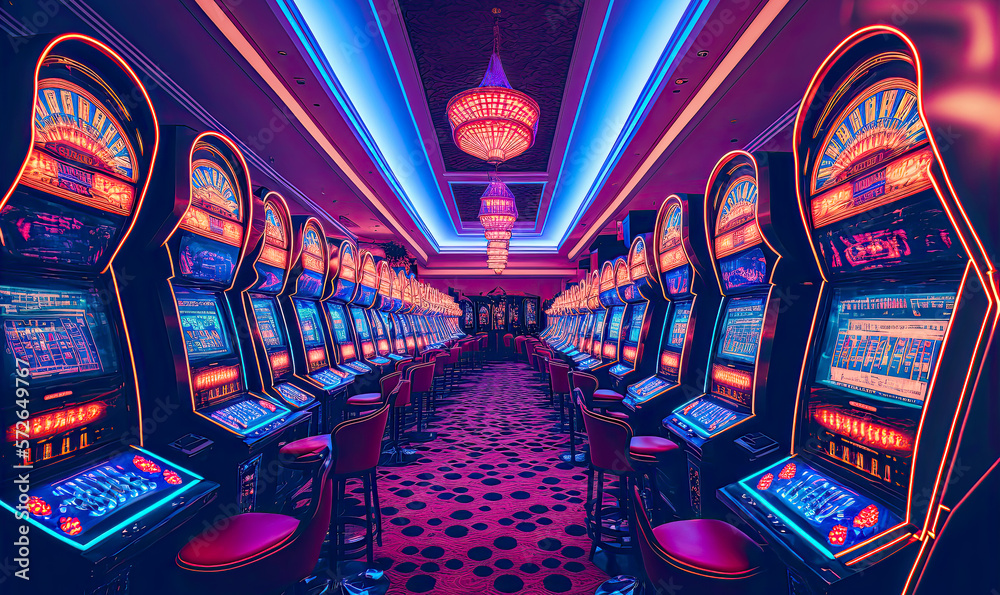
Behind the shimmering illuminations plus the alluring sounds of rotating wheels lies a dynamic realm where creativity meets numbers: the creation of casino games. As players flock to gaming establishments seeking thrills and the chance of striking it rich big, a huge amount of effort takes place behind closed doors to create the games they enjoy. 98WIN COM From the starting concept to the final product that players interact with, numerous elements come together to ensure an captivating gaming experience.
Designers, technicians, plus game creators collaborate to combine cutting-edge technology with enthralling gameplay features. Each aspect, from graphics plus audio elements to probabilities and payouts, is meticulously designed to draw in players and keep them engaged. Understanding this complex process of the way casino games are made reveals not only the technical skills required but also the artistic vision that transforms these engaging experiences to life.
Casino Game Design Process
The design process begins with brainstorming and conceptualization, where creators develop ideas for new casino games. This first phase typically involves identifying potential audiences and analyzing market trends. Designers consider factors such as game mechanics, themes, and payout structures to create an engaging experience. Teamwork between game designers, mathematicians, and artists is crucial to ensure a balanced concept. 98Win.group
Once a concept is chosen, the next stage entails prototyping and testing. Designers create a working version of the game to assess its playability and mechanics. This facilitates adjustments and refinements based on feedback from testers. Reiteration is vital, as designers may go through multiple rounds of testing to optimize gameplay balance and user experience. This phase is crucial for spotting any possible issues before the game is finalized.
After testing, the game moves into the development phase and production. This includes the technical aspects of coding the game software, integrating graphics, and ensuring compliance with gaming regulations. Quality assurance testing verifies that the game functions flawlessly across different platforms and devices. Once everything is polished, the game is prepared for launch, often accompanied by marketing strategies to attract players and generate buzz around the new casino offering.
Tech and Development
The development of gambling games has evolved significantly with developments in tech. Contemporary game design often includes premium graphics, captivating sound effects, and dynamic animations that provide a compelling experience for players. Game developers use complex software tools and programming languages to develop these interactive gaming experiences. Additionally, the use of random number generators ensures equity and unpredictability in outcomes, which is crucial for ensuring player trust and compliance with gaming regulations.
In the past few years, the surge of online casinos has pushed the boundaries of game development even further. Developers are now able to create games that appeal to a worldwide audience, integrating features such as live dealer options and virtual reality environments. This transition has encouraged innovation, leading to unique game mechanics and formats that enhance player engagement. Gaming on mobile devices has also become a significant focus, prompting developers to optimize games for mobile phones and tablets, ensuring accessibility and ease of access for players on the go.
Cooperation among designers, visual artists, and mathematicians is crucial in the creation process. Each team contributes their expertise to make sure games are not only visually appealing but also statistically accurate and enjoyable. The integration of player feedback during testing phases allows developers to enhance game features and functionalities, ultimately leading to a successful launch. As technology continues to advance, the potential for new game concepts and experiences is endless, promising an enticing future for casino games.
Evaluating and Quality Control
Once a gambling game has been created, it transitions to the crucial phase of testing and quality control. This phase ensures that the game operates flawlessly and provides a fair experience for players. Teams conduct comprehensive tests, including operational checks to confirm that all game features work as intended. Each component, from graphics to sound effects, is assessed to ensure high standards are met.
In addition to functionality testing, the game undergoes thorough compliance checks to meet regulatory requirements. Various jurisdictions have specific regulations governing game fairness and player protection. Quality assurance teams will verify that the random number generators are functioning correctly and that the game’s payout percentages correspond with industry standards. This meticulous examination helps forge trust with gamblers and oversight bodies alike.
Finally, beta testing may be conducted with genuine players to gather feedback on user experience. This invaluable insight allows developers to implement necessary adjustments before the public launch. Resolving any potential issues recognized during this phase helps ensure that gamblers will have a seamless, engaging experience when the game goes live. The commitment to excellence reflects the industry’s dedication to delivering entertaining and trustworthy casino games.
